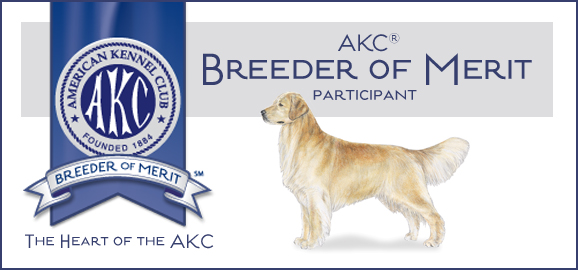Most, if not all, trainers that refer to themselves as “balanced trainers” say that it is not possible to effectively train a dog without using punishments. We totally disagree with this assertion and will discuss some of the reasons why in this post. We will also talk about some of the many other options that yield better results than punishments.
This page was not written to judge those who do add punishments to their training. We have many friends who use corrections in their training and are successful. The purpose of our website is never to judge (unless the punishment is severe or unreasonable). The purpose of this page is not to argue whether corrections are wrong. This page was written to argue the point that equal (or in our opinion better) training is possible without the punishments.
Punishments are Quick Temporary Fixes to Outward Behavior
We believe that punishments are nothing more than a bandaid on most problems. Punishments are quick fixes. They change outward behavior, but in our opinion, they are usually not permanent solutions.
Positive reinforcement training when done correctly goes deeper than outward behavior. Our aim in training is to change the whole dog, not just outward temporary behavior.
Punishment based training can also change the dog on the inside. However, the changes that punishments create on the inside are not the changes trainers are after. Good balanced trainers seek to use punishments in such a way that they don’t affect the dog on the inside. When corrections affect the heart of the dog, it is always through unwanted negative side effects from the punishment.
Positive Reinforcement Training Can Change the Dog from the Inside Out
Our philosophy is built around spending considerable training time conditioning a dog to want to do desirable behaviors and and then building the ability to successfully carry out that desirable behavior. If time is spent up front properly training the dog to have the desire and the ability to perform acceptable behavior, bad behaviors can be drastically (if not totally) reduced.
A Training Example
For example, many dogs are punished for out-of-control behavior. We don’t think that this is the best solution.
Instead of punishing the dog for this type behavior, we’d approach changing his behavior by addressing first of all his desire to act better. We’d use classical conditioning and marker training for this aspect of our training. See our soon-coming pages on these topics by clicking on the links.
Then we’d teach the dog to have the ability to have self-control or what some trainers call impulse control. We’d gradually and incrementally expect more self-control from the dog as he gains the ability to do so. See our soon to come page on Building Self Control for more details.

What is a Punishment?
A punishment is something that is used to decrease a behavior. All punishments are either “positive punishments” or “negative punishments.” A lot of people in the dog training world seem to think that “positive” means “good” and “negative” means “bad”. However, this is not the case.
Using a “positive punishment” means that you are adding something to the training session to decrease a behavior. For example, yanking on the leash, using a shock collar, hitting your dog, and telling your dog “no” are all positive punishments. Obviously, some are much worse than others.
Using a “negative punishment” means that you are taking something away from the training session to decrease a behavior. This is often a fantastic way to train a dog without scaring or hurting your dog.
Here is a good example. Your dog is overly excited to see you. He jumps on you. You leave the room for a few minutes. Leaving the dog is a negative punishment. You have taken something away from the dog that he wants: yourself. This is the negative part or the taking away part. What makes it a punishment is that it will decrease the chances of the behavior being repeated. Continue leaving every time your dog jumps and he will learn that jumping is no fun. It won’t take long for him to stop jumping so that he can keep you around.
Negative punishment is a tremendous tool when training with reward based training. Almost all “positive only” trainers recommend negative punishment. However, the source of controversy is positive punishment. The rest of this page will be about positive punishment only. Therefore, I will be referring to positive punishments as plain “punishments” for simplicity’s sake. I will also occasionally use the word corrections. In this article corrections means the same thing as positive punishments.
Positive Reinforcements are Better and If Done Correctly Will Yield Better Results Than Corrections
We understand the philosophies of both positive-only as well as balanced trainers. We’ve trained using both methods at some point in the past. We know many trainers on both sides of the “Punishments or Not” debate who are very well respected. However, our experience has been and scientific research has proven that positive reinforcement yields better results when done correctly. Read why on our page entitled 10 Reasons for Reward Based Training.
Reward-Based Training Alone IS Possible
Reward-based training alone is possible. Positive reinforcement is better if a person has the skill and desire to master positive training techniques. See our post on How to Use Positive Reinforcement training. The key to successful positive reinforcement training is to learn a few non-punishment based techniques to stop bad behavior. Then use reward-based training to train an alternative behavior.

Non-punishment Training Techniques
So, how do you stop bad behavior without resorting to corrections? There are several excellent techniques that work. As has already been mentioned, negative punishment or taking something away from the puppy that he wants is a very good method for stopping bad behavior. Controlling your puppy and his environment is another way to stop bad behavior. Diverting your puppy’s attention is a third method. Waiting on unrewarded bad behaviors to fade on their own is a fourth. We discuss these techniques in more detail in our article entitled Stop Bad Behavior Positively. These methods are more effective and produce better results than corrections.
Many Positive Only Trainers Advocate Refraining From Telling Your Dog “No”
We disagree. Saying “no” to a dog is indeed a punishment, especially for the sensitive eager to please type dog. However, it is important to us that our puppies and dogs know when they are right or wrong. We will say a calm “no” when they have done the wrong thing. We don’t yell or even raise our voices. Our puppies and dogs know that when they hear the word “no”, they need to try something different in order to earn their reward. Although a calm “no” is not painful, it is indeed a mild punishment. Dogs don’t like to hear it and it is a deterrent to bad behavior.
Positive Training; Not Permissiveness
At the risk of being redundant, we want to make it clear that positive training is NOT the same as permissiveness. Allowing a dog to practice poor behavior is never a good choice. Good reward-based training never gives way to permissiveness.
Final Thoughts
It is possible to train all dogs completely and thoroughly without using painful positive punishments at all. These punishments can have side effects that can cause internal damage to the dog.
Positive reinforcement training, on the other hand, when done correctly can build a dog up from the inside out giving him both the desire and the ability to behave.
Punishments can be a quick fix for outward behavior. Positive reinforcement training might be slower, but when done correctly, it gives longer-lasting better results.

